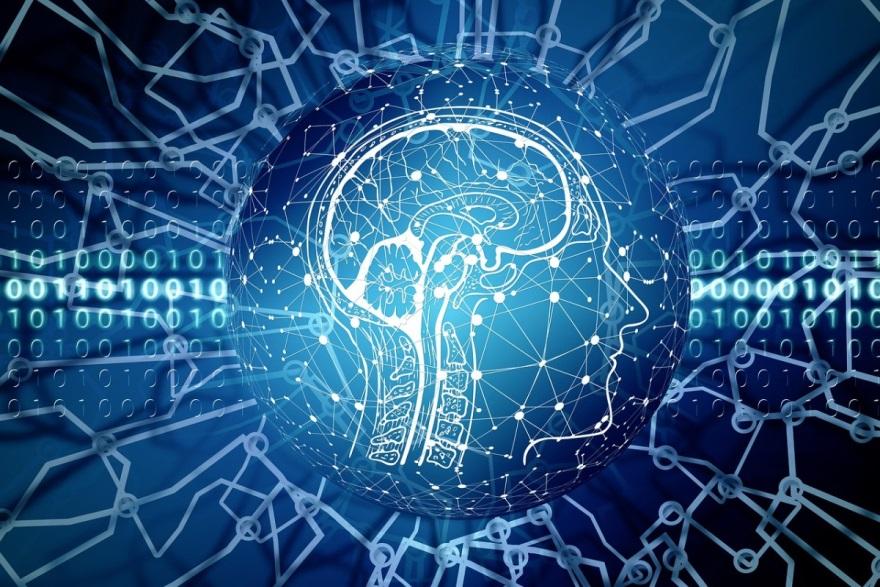For the past couple of years, we’ve seen words like “Machine Learning” (ML) and “Artificial Intelligence” (AI) cut across most of our industries. They are powerful arms that allow changing your data processing, analysis practices, and practices of AI services. Helping others understand the importance and fields of possible applications of the basics of machine learning and artificial intelligence.
What is Machine Learning? Machine learning is a subset of artificial intelligence by which computer systems develop the ability to learn from input data and then make predictions or take actions based on the program.
Where traditional programming involves human developers writing code that gives instructions to a computer to perform certain tasks, in machine learning, algorithms learn patterns and relationships from data to make certain decisions or predictions.
Key Components of Machine Learning:
Data: Data form the basis of machine learning. It could be structured or unstructured. Various machine learning models are trained on this data. It is, therefore, the prerequisite for a successful machine learning project to have diverse and high-quality datasets.
Algorithms: “Machine learning algorithms” refers to mathematical models used in learning data patterns with the aim of making some important decisions or predictions. It includes supervised learning, unsupervised learning, and reinforcement learning with their own subclasses, handling various tasks and datasets.
Training: It is feeding the data into the machine learning algorithms to facilitate learning patterns and relationships. In the execution, the algorithms iteratively optimize their parameters in such a way that the error in performance is minimized or the performance is maximized for some particular task.
Evaluation: Evaluation refers to the measure of model performance using various machine learning models applied to unseen data. They include accuracy, precision, recall, and F1 score, commonly used measures of model effectiveness.
Deployment: It is the process of integrating the trained machine learning model into real-world applications or systems to make predictions or decisions on new data.
Applications of Machine Learning:
Machine learning has a wide range of applications across various industries, including: Healthcare: The line of medical field involves the use of machine learning in diagnosis, prediction of diseases, and providing personalized treatment recommendations from medical data.
Finance: This is crunching financial data to detect fraud, assess risks, conduct algorithmic trading, and perform credit scoring.
Marketing: Machine learning is used in the marketing domain to do targeted advertisement, customer segmentation, and product recommendation based on behavior by utilizing customer histories.
Automotive: Autonomous vehicles are driven by machine learning to navigate and make decisions for real-time traffic scenario navigation, object detection, and decision making on-the-go.
Retail: The algorithm can use inventory management, demand forecasting, price strategies, and how to operate in retail customer experience.
What is Artificial Intelligence?
In much broader terms, the concept refers to the simulation of human intelligence processes by machines, including learning, reasoning, problem-solving, perception, and language understanding.
Machine learning is a subset of AI. Much more varied techniques and approaches fall under the discipline of AI, such as, for example, symbolic reasoning, expert systems, or natural language processing, not mentioning computer vision.
Key Components of Artificial Intelligence:
Machine learning: The major area of artificial intelligence that gives machines the ability to learn from data and make their own decisions or predictions.
Knowledge Representation: The representation of knowledge basically refers to the encoding of worldly knowledge in some structured form, for the sole intention of enabling machine inferences. Examples include ontologies, semantic networks, and knowledge graphs.
Reasoning: Reasoning is a process of deriving logical inferences from available knowledge with respect to drawing conclusions or making decisions. It comprises such types of reasoning as deductive reasoning, inductive reasoning, and abductive reasoning.
Natural Language Processing (NLP): NLP represents a set of processes and tasks trying to make machines understand, interpret, and even reasonably proceed with human languages. This may be, for instance, text classification, sentiment analysis, machine translation, question answering, and other applications.
Computer Vision: This is the subfield of AI that enables machines to process, interpret, understand, and take out some high-level information from images in the real world. It includes tasks like image classification, object detection, image segmentation, and many others.
Applications of Artificial Intelligence:
Artificial intelligence has a wide range of applications across various domains, including:
Virtual Assistants: They are AI-powered software applications taking care of tasks of natural language processing and interactive dialogues with users in order to, for example, set a reminder or make a shopping list.
Autonomous Systems: AI powers autonomous systems, making them self-navigating or self-serving; they may operate in any kind of environment without human control. Among others, these can be exemplified by self-driving cars, drones, or robots.
Diagnostic Healthcare: It applies AI algorithms to analyze medical images and sometimes patient data, along with clinical notes for assistance in making a diagnosis, developing a treatment plan, and giving patient management.
For instance, a language translation system like Google Translate, based on artificial intelligence, uses a corpus of data while making use of machine learning and natural language processing to translate the text from the source language to the target language.
Detection of Fraud: AI algorithms detect patterns and present the finances’ financial transactions to prevent them from getting a loss-causing activity.
Integration of Data, Analytics, and AI Services:
Data, analytics and AI services are bundled information technology services that provide insight for decision-making within an organization. Essentially, data forms the very base for the whole chain of analytics and AI, where it plays a role similar to that of raw material for both analytics and learning engines. Analytics means the process of mining out worthy information from the data, using statistical and computational techniques. AI-based services use sophisticated algorithms and models to automate tasks, give predictions, and empower intelligent decision-making.
The development will enable firms to make data, analytics, and AI services a competitive differentiator in order to maintain competitiveness, spur innovation, and continue improving operational efficiencies. Artificial intelligence and machine learning allow organizations to deliver real value from their data, eliminate the need for repeated human tasks, and enable them to learn from customer experience and behavior. On the contrary, decisions made on the basis of data help optimize processes in an organization, enable risk management, and find new development opportunities.
In addition to delivering data, analytics, and AI services, it is also focused on ethical considerations at the forefront of developing and deploying machine learning and artificial intelligence solutions. These are growing as important considerations due to the pervasiveness of these technologies in society and call for adherence to the issues related to privacy, fairness, transparency, and accountability.
Privacy: Most of the time, the system of machine learning and AI requires a lot of data. Hence comes the attached problems of the data privacy and security. Organizations should ensure strong security settings while following guidelines that include GDPR (General Data Protection Regulation), among others.
Fairness: Bias in data or algorithms may bring about unfair outcomes. It may even reproduce social inequalities and discriminate against certain groups of people. Ethical AI practitioners ensure that such biases are minimized, recognized, and eliminated not only from the data but also from the algorithms so that everyone is treated fairly and justly.
Conclusion:
It emerged as a powerful technology based on machine learning and AI that was reshaping industries and transforming the way of work, living, and relating to the world completely. Understanding the fundamentals of machine learning and artificial intelligence supports individuals and organizations in knowing and realizing the potentials involved so that to apply.




